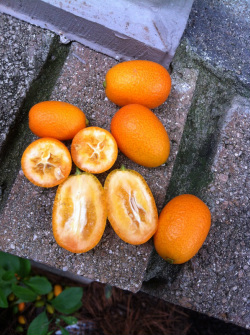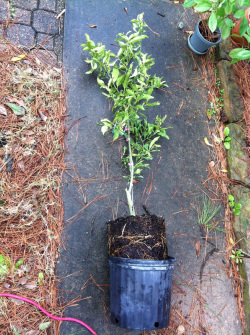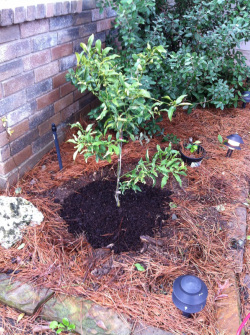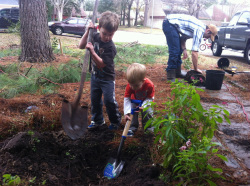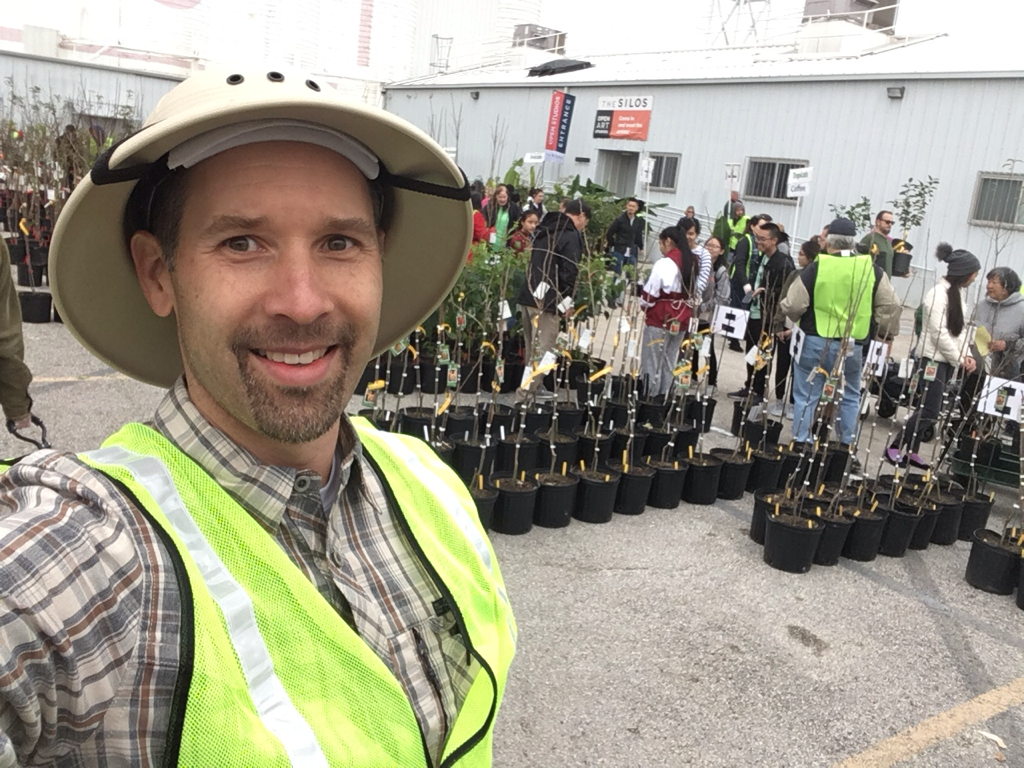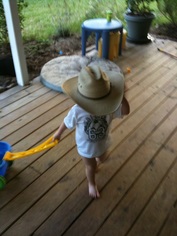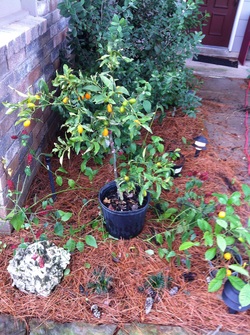
The first thing I like to do when I bring a new fruit tree home is pick off any fruit it may be carrying. I know that's really hard to do sometimes, but I want a young tree to put its energy into growing a good, strong root system, and not a few poor quality fruit. Many fruit trees will try to produce a few fruit while young, and it just isn't worth sacrificing the long term health and growth of the tree for so little. If you let a young tree carry a bunch of fruit, it will put all of its energy into the fruit instead of growing roots and getting bigger. Remember, a bigger tree will produce more fruit & better fruit!
Once all the fruit has been picked off, its time to dig the hole. I've heard all sorts of advice on this, with some people saying you need to dig a giant holes to various widths and depths, but I think that's nonsense. First of all, I'm lazy, and I'm not digging five feet down in heavy clay soil. Secondly, the truth is that your fruit tree won't know if it is planted in a hole that's two feet deep or 200 feet deep. What really matters is how the tree is planted with respect to the soil line (ground surface), and that the sides of the hole are loosened enough for the roots to be able to penetrate. If I'm planting a new tree that came in a 3-gallon pot, I like to dig a hole as deep as the pot (approximately 8-10 inches), and about twice as wide as the pot (approximately 2.5 feet in diameter). I try to really rough up the sides of the hole since the most critical root growth will be the shallow 'feeder' roots. Stockpile the dirt that comes out of the hole nearby, and don't add anything to it.
Once the hole has been prepared, carefully remove the tree from the pot. You can either cut the plastic pot off with a pair of shears, or you can lay the tree on it's side and gently press on the sides of the pot to loosen it up a bit. This is really easy with 3-gallon pots, and very difficult with larger ones. Earlier today I had to get an Ujukitsu tree out of a 30-gallon pot! Once the tree is out of the pot, inspect the roots to see if they look healthy. If the roots are growing in circles, it probably means that the tree has been stuck in that pot for a long time, and has become 'root bound' or ' pot bound'. This isn't terrible, it just means you should try to spread the roots out a little bit when you plant the tree so that they can grow into the native soil.
Knock, shake, or wash off as much of the potting media that came with the tree as possible, so that when you plant it the roots are in contact with the native soil. This is especially important if you have heavy clay soil, because if you don't your tree's roots may continue to just grow around and around in the potting mix, and never grow beyond it. It could also encourage root rot or drown your tree. Once the roots are exposed, hold the tree in the hole so that when planted it will be a few inches higher relative to the soil line than it was in the pot. Holding the tree with one hand, fill the hole in around the roots with the other. This is easy with small tree, and a really challenge with a big one. Crumble the clods of dirt as you put them in the hole to loosen it as much as possible, and try to make sure the outer layer of roots has good soil contact, taking care to fill in any hollows or void spaces. Once the hole has been filled and tree roots well covered, compress the soil gently with your hands (don't stomp on it). At this point I like to use the potting media the tree came in for mulch, and water the tree in well.
As busy as I've been , my tree-planting for the year isn't over yet. I will be volunteering at the annual Urban Harvest Fruit Tree Sale next weekend, and I can guarantee you that I won't be coming home empty handed. I'll be working in the avacado and dragon fruit section (Section G) if you'd like to stop by. Hope to see you there!
